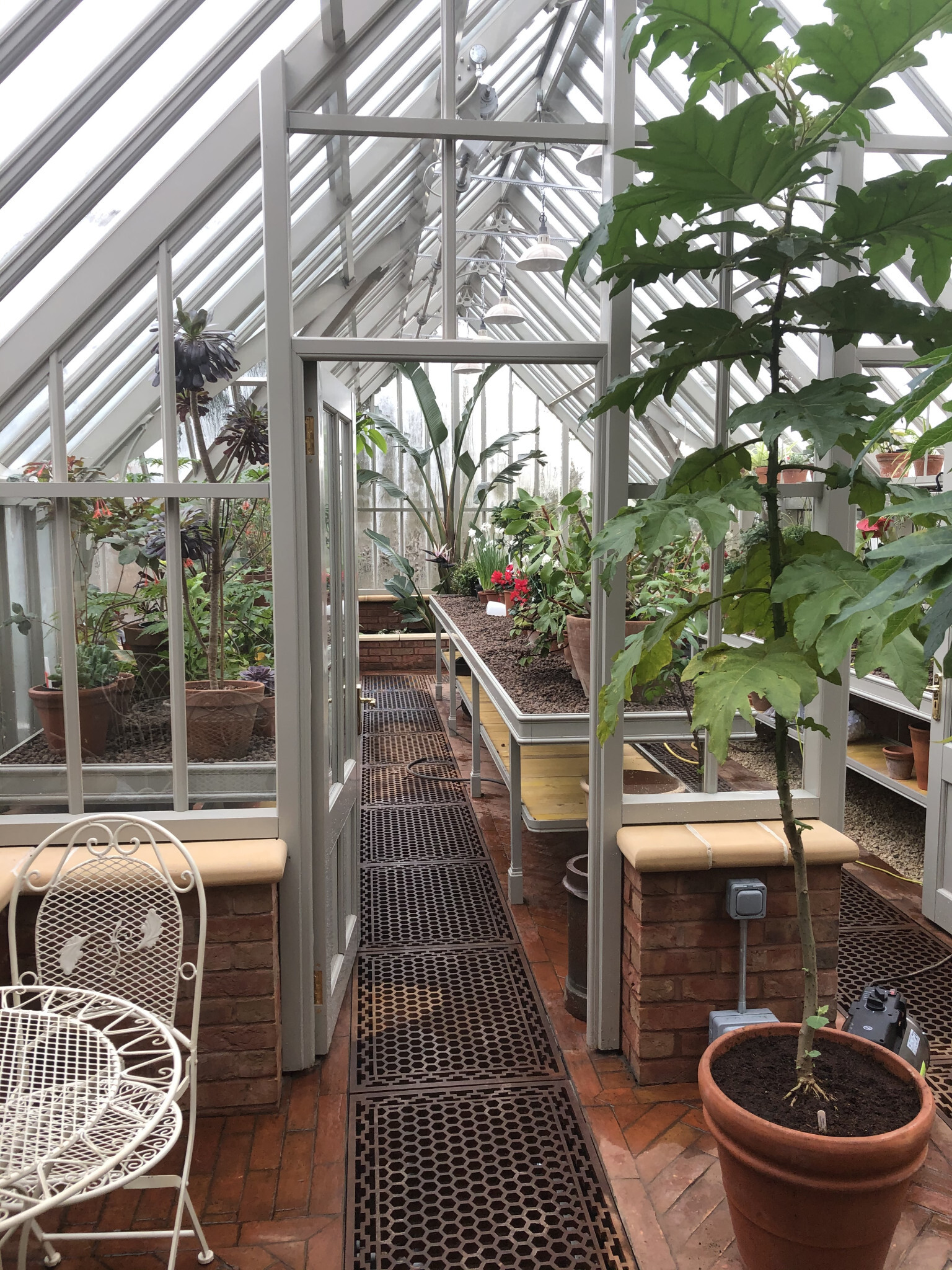
We were thrilled to be involved in a recent greenhouse floor project with Somerset-based natural stone specialist, Parish Stone. There are lots of different options for a greenhouse floor; concrete is a popular choice, as is stone, gravel, weed matting and speciality vinyl. But, at this very special property in Somerset, the Alitex Victorian-style greenhouse featured Terracotta brick slips, laid in a herringbone pattern and incorporating drainage grates and gravel areas. The tiles were supplied by Exmoor Flagstones.
Made from natural clay, terracotta is dried in the sun or fired in an oven; the name literally means ‘baked earth’. Along with its beautiful burnt orange colouring, it provides a robust finish that’s versatile and easy to look after. However, like many natural materials, it is porous and can easily become stained. There are two ways of protecting terracotta tiles – either by applying a synthetic sealer or the more traditional method using oil and wax; this was the method adapted by Eli from Parish Stone who used LTP Boiled Linseed Oil and Antique Wax to create the stunning golden-toned vintage finish.
Treating terracotta the traditional way
Using the traditional method to treat terracotta takes longer but it does create a more characterful aesthetic. It also provides longer-term mechanical strength, by effectively filling the pores within the terracotta.
During the first stage of treatment – and following a thorough clean – LTP Boiled Linseed Oil is applied with a brush until the tiles are saturated. You should allow at least 12 hours between each coat to ensure that the oil is completely cured. Most terracotta will take 1-2 coats to reach saturation but some tiles, especially handmade terracotta, may take 4-5 coats. The tiles should then be left to dry for at least 24 hours.
During the second stage of treatment, wax is applied. This provides a resilient protective layer against water, dust and dirt, as well as extra sheen. LTP treatments include LTP Clear Wax and medium brown LTP Antique Wax – used at the greenhouse – which deepens the colour tone and, in many cases, instantly ages the appearance of the terracotta. Both treatments have a soft paste consistency. They are applied with a cloth and the surface is then buffed.
As well as new installations, this treatment method can also be used to restore older floors, once the tiles have been thoroughly cleaned and any existing sealant removed. For ongoing cleaning and aftercare, we recommend LTP Waxwash – a gentle, pH neutral cleaner which contains a trace of Linseed Oil to reinforce protection.
For more advice on floor maintenance and protection, please contact LTP’s Technical Team on tel. 01823 666213, email [email protected] or visit www.ltp-online.co.uk
ends –
For further media information and photography, please contact:
Angela Fitzhugh PR Ltd on email [email protected] or tel. +44 (0)1579 673026



